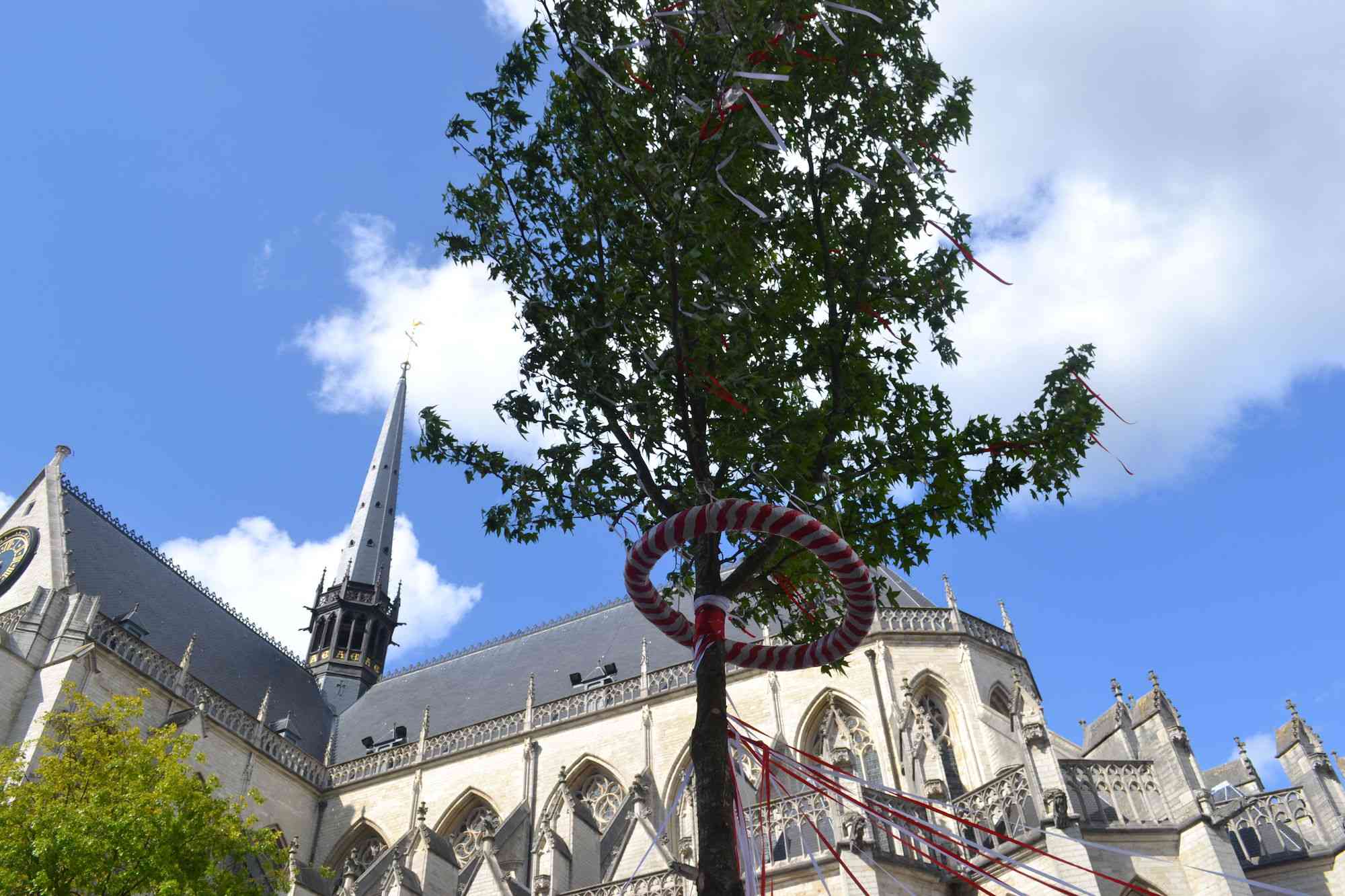Thessaloniki gets ready for its metro launch in November
The underground rapid transit lines have been under construction for almost two decades due to various project delays
 TheMayor.EU logo
TheMayor.EU logo The ancient dispute is recognised by UNESCO as part of the region’s heritage
Today both the citizens of Brussels and Leuven will mark the occasion of the Meyboom, a medieval tradition born out of the rivalry between the two cities. The tradition includes a parade and planting the Mayboom tree, traditionally a beech, on the corner of Rue des Sables and the Rue du Marais in Brussels and in Grote Markt Square in Leuven.
The Mayboom tradition started in 1308 and this year marks its 714th year. Since its conception, the tree has been planted on 9 August, marking the Day of St Lawrence, as the Companions of St Lawrence have been the ones to carry it out.
On that day, with the help of the city’s Plantation Department, the Companions of St Lawrence choose a tree from the Sonian Forest. According to tradition, it must weigh at least 600 kilograms and measure 12-13 metres in height and be leafy.
The tree is then cut down and transported by Bûûmdroegers (tree bearers) through the municipalities of Schaerbeek, Saint-Josse-ten-Noode and the City of Brussels. A marching band accompanies the procession and Poepedroegers (giant puppet bearers).
At 1 p.m., a tribute is paid to the deceased Companions, then the tree needs to be planted before 5 PM, otherwise, the city would lose the rights to the Mayboom and the tradition would pass on to Leuven. It is important to note that the tree is not really planted, but rather, just stuck in the ground and removed the next day.
In Leuven, by contrast, the Mayboom is planted on the Grote Markt and usually stays up until September.
 The Mayboom in Leuven, Source: City of Leuven
The Mayboom in Leuven, Source: City of Leuven
Since 2008, the Meyboom has been recognised as a Masterpiece of the Oral and Intangible Heritage of Humanity by UNESCO, as part of the binational listing of 'Processional giants and dragons in Belgium and France'.
According to some sources, the tradition originated in 1213 from a massive bar fight during a wedding in the outskirts of Brussels, with some men from Leuven involved. The Leuven men seemed to have had the upper hand, but then the Companions of St Lawrence showed up and helped their fellow citizens.
As the story goes, the then Duke of Brabant, John II, gave the Companions the right to plant the tree, yet they only started doing that in 1308. The tree has been planted every year since then, even during the war years at the beginning of the 20th century. According to legend, however, if Brussels citizens fail to plant the tree before 5 PM they would lose the rights to Leuven.
In 1974, a group of Leuven men, disguised as journalists, found out which tree was designated as the Meyboom and chopped it down on the night of 8 August. Supposedly, they wrote on the stump: ‘Men of Brussels here your tree has stood, the men of Leuven left with it'’.
On 9 August 1974, the Meyboom was planted before 17:00 on the Grand Market in Leuven. The inhabitants of Brussels, however, did not bother much with technicality and selected another tree, planted it before 5 pm and continued with their tradition. Now both cities claim the right to plant the real Meyboom, and for Leuven this year will be their 49th in a row.

The underground rapid transit lines have been under construction for almost two decades due to various project delays

Now you can get your wine in Talence by paying directly in Bitcoin

That’s because the state has to spend money on updating the railway infrastructure rather than subsidizing the cost of the popular pass

Rethinking renewable energy sources for the urban landscape

The examples, compiled by Beyond Fossil Fuels, can inform and inspire communities and entrepreneurs that still feel trepidation at the prospect of energy transition

Now you can get your wine in Talence by paying directly in Bitcoin

The 10th European Conference on Sustainable Cities and Towns (ESCT) sets the stage for stronger cooperation between the EU, national and local level to fast track Europe's transition to climate neutrality.

At least, that’s the promise made by the mayor of Paris, Anne Hidalgo

The underground rapid transit lines have been under construction for almost two decades due to various project delays

At least, that’s the promise made by the mayor of Paris, Anne Hidalgo

Hostal de Pinós is located in the geographical centre of the autonomous region

Despite its church-y name, the district has long been known as the hangout spot for the artsy crowds

Urban dwellers across the EU are having a say in making their surroundings friendlier to people and the environment.

Forests in the EU can help green the European construction industry and bolster a continent-wide push for architectural improvements.

Apply by 10 November and do your part for the transformation of European public spaces

An interview with the Mayor of a Polish city that seeks to reinvent itself

An interview with the newly elected ICLEI President and Mayor of Malmö

A conversation with the Mayor of Lisbon about the spirit and dimensions of innovation present in the Portuguese capital














